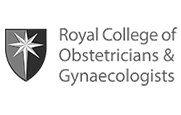Endometriosis and Painful Periods
About endometriosis
Endometriosis is a common gynaecological condition affecting 1 in 10 women. It is the most common cause of pelvic pain in young women however there is often a delay in diagnosis. Increasing public awareness of endometriosis, together with early identification and diagnosis, can help to treat the disease at early stages before the development of complications associated with more advanced stage disease. Endometriosis can also affect one’s ability to fall pregnant.
What is endometriosis?
Endometriosis is a condition where the endometrium, the tissue that normally lines the inside of the uterus (womb), is present elsewhere in the pelvis. This abnormal growth of tissue behaves just like it would inside the uterus, in that it will “shed” cyclically during menstruation. However, unlike the lining of the uterus which can “bleed out” through the vagina, the small endometriotic lesion results in microscopic “internal bleeding”, which causes inflammation and pelvic pain. This repeated inflammatory process can result in scar formation, called adhesions, which can stick pelvic organs such as the Fallopian tubes and ovaries together and impair fertility. The endometriotic lesions are usually only a few millimeters in size and scattered over the peritoneum (lining of the pelvis) with surrounding scarring. Endometriosis can also occur over the reproductive organs themselves, including the ovaries, Fallopian tubes, uterus and vagina as well ligaments called the uterosacral ligaments.
What are the common symptoms of endometriosis?
Pain is the most common symptom of endometriosis but can be highly variable for each individual, and can also fluctuate monthly. It is important to note that symptom severity does not accurately reflect the extent and severity of endometriotic disease. Symptoms vary depending on the location of the endometriosis however common symptoms include:
- Menstrual pelvic pain
- Non-menstrual pelvic pain
- Pain with bowel motions during menstruation
- Pain with voiding during menstruation
- Menstrual chest pain
- Pain during sexual intercourse
- Premenstrual spotting
- Difficulty falling pregnant
What are the different types of endometriosis?
Endometriosis can be classified into 3 types:
- Superficial peritoneal endometriosis: These tiny lesions are the most commonly encountered type of endometriosis and are generally considered the mild form of the disease. This however does not necessarily equate to low symptom burden.
- Ovarian endometriotic cyst: This form is often called “chocolate cyst” due to the brown-coloured appearance of the cyst contents. Ovarian endometriotic cysts can have the highest impact on ovarian function and fertility.
- Deep infiltrative endometriosis (DIE): Although it is less common, deep infiltrative endometriosis is the most severe form of endometriosis which infiltrates into adjacent pelvic organs as well as pelvic nerves, and extrapelvic organs such as the diaphragm and lung.
How can you find out if you have endometriosis?
To determine whether a person has endometriosis, a doctor will assess them based on their symptom characteristics. Physical examination can also identify tender areas that may indicate the site of disease. Endometriosis may be diagnosed via ultrasound however this will only detect large ovarian endometriotic cysts and therefore women with the most common form of superficial peritoneal endometriosis will often have “normal” ultrasounds. A specialist ultrasound, commonly called “deep endometriosis ultrasound”, performed at specialist ultrasound centres can identify DIE. Therefore, it is generally true that the only way to reliably diagnose and assess endometriosis is through a laparoscopy. This is a surgical procedure commonly called “key-hole surgery” where a thin telescope is introduced into the abdomen through a small incision at the umbilicus (belly button).
How is endometriosis treated?
Although it will not treat or cure the disease process, symptomatic pain relief can be achieved with non-hormonal and hormonal medical therapy. Non-hormonal therapy involves painkillers such as paracetamol (Panadol) and non-steroidal anti-inflammatory medications including naproxen (Naprosyn) and mefenamic acid (Ponstan). For women who are not trying to fall pregnant, hormonal preparations can be trialed, the most common one being the oral contraceptive pill (OCP) which contains two female hormones, oestrogen and progesterone. When medical therapies are ineffective in controlling symptoms, or when someone is trying to fall pregnant, one needs to consider having a laparoscopy to diagnose and excise the endometriotic disease. This is the only way to remove the abnormal growth however there unfortunately remains the possibility of recurrence. The use of hormonal therapy post-surgery for those suitable, either in the form of oral medications or progesterone intrauterine devices such as a Mirena, has been shown to decrease this chance. Laparoscopic excision of endometriosis often improves the chance of falling pregnant, either through natural conception or assisted fertility treatments such as IVF.
Will surgical excision of endometriosis help with my pain?
Although the majority of patients will have a significant reduction in their symptom severity, it is not uncommon to still experience some residual pain. The goal of endometriosis surgery is to remove all of the endometriotic lesions, however this may not be the sole source of pain. Other possible gynaecological causes of pain could include uterine conditions such as fibroids and adenomyosis. Therefore, it is possible that even with complete excision of all visible lesions, one can continue to experience some pain. Pain can also return if there is a recurrence in endometriotic lesions, which occurs in 35% of cases.
Central sensitization is a process that commonly occurs in those who experience chronic pelvic pain, where the pain perception is heightened, resulting in symptoms that are disproportionately intense compared to the extent of identifiable pathology. These patients would benefit from neuropathic pain medications to “wind down” this process. However, it is necessary to ensure that the endometriotic lesions have been effectively excised, prior to this diagnosis.
What should be done during laparoscopic endometriosis surgery?
The aim of surgery is to safely excise all visible endometriotic lesions. This requires a thorough and comprehensive assessment of the abdominal and pelvic cavities in order to clear all possible sites of endometriotic disease. The surgeon performing endometriosis surgery should have experience and expertise in recognizing all the endometriotic lesions in its variety of appearances. Endometriotic lesions can have very subtle appearances, particularly in the early stages of disease. There may be only a slight discoloration of tissue or increase in opacity, minor surface irregularities or the presence of minimal atypical capillaries. Erroneous underestimation of the lesion depth can result in superficial cauterization (burn), rather than a complete excision. Partially treated deep endometriotic lesions can make subsequent surgery more difficult, not only due to the possible scar formation (adhesions) from the initial surgery but also as the remaining lesions can be more difficult to recognise. Endometriosis that hasn’t been removed can lead to persistent pain and the need for further surgery.
Endometriosis can be in close proximity to sensitive pelvic structures such as the bowel and ureters (thin tubes that drain the urine from the kidney to the bladder) and safe removal of such lesions requires a unique set of surgical knowledge and technical skills. Severe endometriosis can cause marked distortion of pelvic anatomy, with multiple pelvic organs being stuck to each other. Severe endometriosis surgery is recognized as one of the most challenging gynaecological procedures, at times more difficult than cancer surgery. As the severity and location of endometriosis cannot be accurately predicted before surgery, the doctor performing endometriosis surgery should ideally have experience and expertise in dealing with severe endometriosis. This will maximize the chance of complete excision during the initial surgery, eliminating the need for further surgery.
For patients who are not actively trying to fall pregnant, a Mirena (progesterone intrauterine device) fitted at the time of laparoscopy is an effective therapy for minimising endometriosis recurrence. A Mirena also provides reliable reversible long-term contraception for 5 years, and is particularly suited for patients who have experienced side effects from the oral contraceptive pill and also those with heavy periods.
Hysterectomy (removal of the uterus) is not required for excision of endometriosis and is only considered in very severe cases and when there is no further wish for pregnancy. In severe cases, extensive disease may be stuck to the uterus and removal of the uterus could aid in a more complete removal of endometriotic disease. The uterus itself can also be a source of significant pain, especially in the presence of adenomyosis (a condition where the lining of the uterus grows into the uterine muscle wall), therefore the removal of the uterus can result in greater symptomatic relief in appropriate circumstances.
Deep infiltrative endometriosis with major involvement of non-reproductive pelvic organs such as the bowel, bladder and ureters requires a multidisciplinary approach of combined surgical specialists such as a colorectal surgeon and a urologist. Accurate preoperative assessment and planning is paramount to ensure that all the necessary specialists are available at the time of surgery to accomplish the required procedures in one single operation.
Robotic endometriotic surgery
Robotic surgery is the most advanced form of laparoscopic surgery with enhanced vision, improved instrumentation and more precise control. It is most suited for difficult surgeries such as in cases of severe endometriosis as listed below. The enhanced robotic capability improves the outcome of complex surgical procedures being performed laparoscopically. The magnified, 3D vision allows better depth and spacial orientation to clearly identify delicate structures, including the fine nerve fibers deep in the pelvis. This is of great assistance in nerve sparing endometriosis surgery. Robotic technology is renowned for its suturing capability, which is particularly helpful following the excision of endometriosis from the bowel, bladder, ureters and diaphragm where delicate suture repair of these organs is required. Another situation where robotic surgery is of significant advantage is when operating in distant, difficult to reach areas as is the case with diaphragmatic and lung endometriosis. The long reach, steady hold, tremor filtration and wristed structure of robotic instrumentation allow for these areas to be accessed and handled with delicate ease.
Endometriosis of the bowel
Endometriosis affects the bowel in 5-12% of cases, most commonly involving the rectum, followed by the rectosigmoid colon and appendix, and less commonly the small bowel. Patients with bowel endometriosis can experience additional bowel related symptoms that typically include painful bowel motions during menstruation. Minor changes in bowel habits during menstruation are very common and are likely to reflect the cyclical changes in hormonal levels and are not suggestive of significant bowel endometriosis. Rectal bleeding is an uncommon symptom of bowel endometriosis. Some patients with bowel endometriosis may be asymptomatic or have minimal symptoms, and the role of major bowel surgery in asymptomatic patients with fertility issues remains unclear. Diagnosis of bowel endometriosis is suspected by symptom characteristics and a clinical pelvic examination. It can often be confirmed preoperatively with a deep endometriosis ultrasound performed at specialised centres. A colonoscopy is usually ineffective at diagnosing bowel endometriosis as the disease is on the outside of the bowel, however it may rule out other possible causes of abnormal bowel symptoms.
Treatment of bowel endometriosis depends on the symptom severity and is guided by the patient’s desires. In patients with bowel endometriosis with minimal symptoms and no fertility issues, major bowel surgery should be avoided. Medical therapy with close monitoring would be the safer and preferred option to start with. There is good evidence that medical therapy can be quite successful in controlling bowel endometriosis symptoms. Medical therapy for symptomatic bowel disease requires continual hormonal medications such as the oral contraceptive pill or progestogen therapy, which does not eradicate the disease. Medical therapy does not improve fertility and is not suited for those who wish to fall pregnant. Surgery is required when medical therapy is unsuccessful. Surgery for bowel endometriosis is challenging and may require a multidisciplinary approach involving a colorectal surgeon. The type of bowel surgery required depends on the extent of bowel involvement and include:
- Rectal Shaving: This is appropriate when the disease on the bowel wall is relatively superficial and the lesion can be “shaved” off the bowel wall leaving the deeper layer and bowel lumen intact.
- Disc Excision: In cases where the disease affects deeper layers of the bowel wall, a full thickness of the affected bowel wall needs to be excised, therefore entering the bowel lumen.
- Segmental Resection: When a large lesion significantly compromises the lumen of the bowel, the whole affected segment of the bowel tube needs to be removed and the adjacent bowel ends are reconnected.
Bowel endometriosis surgery carries a higher risk of complications. The main risks include the chance of infection, perforation of the bowel wall, fistula formation and in extreme cases the need for a temporary colostomy. Following bowel surgery, there may also be alterations in bladder, bowel and sexual function.
Dr Chou was invited to contribute a video article on the technique of laparoscopic rectal shaving by the Journal of American Association of Gynecological Laparoscopists in 2019. Dr Chou is currently (May 2020) working on an innovative rectal shaving technique called Laparoscopic Reverse Submucosal Dissection (LRSD), which will also be simply called “Sydney Shaving”
Endometriosis of the bladder and ureters
Deep infiltrative endometriosis can involve the renal tract in 1-5% of cases, which more commonly affects the bladder than the ureters. Some patients with endometriosis involving the bladder may have no symptoms whilst others may experience menstrual bladder symptoms including urinary frequency, urgency, painful voiding or finding of blood in the urine. Endometriosis affecting the ureters can cause gradual lumen narrowing, thus impeding the flow of urine from the kidney to the bladder. When the narrowing becomes critical the backpressure can result in kidney damage.
Diagnosis of endometriosis affecting the renal tract is suspected based on the symptom characteristics and confirmed on ultrasound. A CT scan can be helpful in assessing the extent of ureteric and kidney damage. In cases of significant renal tract endometriosis, it is important to involve an expert laparoscopic urologist for a multidisciplinary approach. Surgical treatment for renal tract endometriosis depends on the affected area and can range from simple lesion excision, to resection of the affected segment with re-implantation of the healthy end of the ureter into the bladder.
Endometriosis of the diaphragm and lung
The diaphragm is a dome-shaped sheet of muscle located between the chest and abdominal cavities, that is responsible for breathing. Endometriosis affecting the diaphragm is rare and is estimated to occur in <1% of patients with endometriosis. Diaphragmatic endometriosis occurs on the abdominal surface of the diaphragm and rarely on the chest side. It occurs much more commonly on the right diaphragm and is often asymptomatic. When symptomatic, symptoms can include pain during menstruation over the chest, shoulder, neck, arm and upper abdominal region. Diaphragmatic endometriosis is suspected based on symptom characteristics but is difficult to confirm before surgery, as the lesions are small and are often missed on preoperative imaging including MRI. Therefore the diagnosis is typically confirmed on laparoscopy. Surgical treatment of diaphragmatic endometriosis can usually be carried out laparoscopically but may also require a thoracoscopy. A thoracoscopy is a telescopic examination similar to a laparoscopy but the thin telescope is introduced into the thoracic cavity through a small incision on the chest wall to examine the chest cavity. This is performed by a cardiothoracic surgeon and thus requires a multidisciplinary approach.
Endometriosis affecting the lung is even less common and may cause difficulties breathing and blood stained sputum, in addition to the symptoms experienced with diaphragmatic endometriosis. In rare cases, it may cause a pneumothorax where air leaks from the surface of the lung into the chest cavity, and can be associated with some degree of lung collapse.
Diaphragmatic and lung endometriosis is another form of rare but severe endometriosis, classified as extra-pelvic endometriosis, which requires a multidisciplinary approach involving a cardiothoracic surgeon for complex upper abdominal and / or thoracic surgical procedures.
Endometriosis of the pelvic nerves, sciatic nerve endometriosis and Neuropelveology
Over the years, great progress has been made in endometriosis surgery particularly regarding laparoscopic or robotic endometriosis surgery. Complex surgeries can now be carried out laparoscopically or robotically, and surgical techniques are constantly being refined and improved. With more experience and larger data sets on the outcomes of endometriosis surgery, some of the less commonly occurring but significant adverse consequences are being brought to light. One example of this is the potential harm to pelvic organ functions from the unsuspected injury to the pelvic nerves that innervate them during radical endometriosis surgery. This is an issue in patients with deep infiltrative endometriosis requiring major endometriosis surgery. In severe cases where endometriosis involves the nerves themselves, these nerves cannot be spared and are sacrificed in the process of excising the disease. Thankfully the centrally located pelvic organs are innervated by a paired set of nerves, one from each side of the pelvis. Therefore, pelvic organ functions are usually preserved if only one set of nerves is affected. When endometriosis threatens the nerves on both sides, the nerves from the less affected side should be preserved even if this means leaving some amount of residual disease. When the endometriosis does not involve the nerve itself but is in close proximity, a special surgical technique can minimise the chance of injuring these nerves. This technique is derived from a radical cancer surgery called nerve-sparing surgery, which can also be applied to endometriosis excision surgery. Another approach to minimising harm to the pelvic nerve is by choosing a more conservative bowel surgery when dealing with bowel endometriosis. Knowledge of the pelvic nerves has been relatively limited and has been primarily derived from nerve-sparing radical pelvic cancer surgery. This has changed recently with the advent of a new and exciting surgical pelvic discipline called Neuropelveology, which is dedicated to the diagnosis and treatment of conditions affecting the pelvic nerves. Neuropelveology equips surgeons with in-depth understanding of the pelvic nerves for procedures such as nerve sparing excision of endometriosis. It also teaches the poorly understood pelvic neuroanatomy and safe approaches for rare conditions such as sciatic nerve endometriosis.
Helpful Links
Dr Chou’s video article on the technique of laparoscopic rectal shaving.
Dr Chou’s publication on sciatic endometriosis
Dr Chou’s blog on Endometriosis Australia















